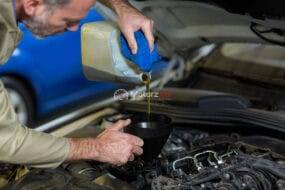Fuel Tank Leaks Identify fuel tank leaks and repairs can pose serious hazards to both your vehicle’s performance and your safety. Identifying and repairing these leaks promptly is crucial to maintaining a well-functioning vehicle and preventing environmental damage. In this article, we’ll explore the common signs of fuel tank leaks, methods for identifying them, and the necessary steps for effective repairs.
Identifying Fuel Tank Leaks:
One of the initial signs of a Fuel Tank Leaks is the distinct smell of gasoline. If you notice a strong, persistent odor near your vehicle, it’s essential to investigate the source promptly. Check the ground beneath your vehicle for any unusual stains or puddles. Gasoline appears as a clear or slightly colored liquid, so be on the lookout for spots near the fuel tank area.
Drop in Fuel Efficiency:
A sudden decrease in Fuel Tank Leaks efficiency could indicate a fuel leak. Monitor your vehicle’s gas mileage, and if you notice a significant and unexplained drop, it’s time to inspect the fuel system. Leaks in the fuel tank can lead to air entering the fuel system, causing sputtering or unusual sounds from the engine. Pay attention to any changes in your vehicle’s noise patterns.
Visual Inspection:
Look for visible cracks, rust, or damaged areas. Perform this check regularly, especially if you frequently drive in harsh conditions. Professional mechanics often use pressure testing to identify fuel system leaks. This involves pressurizing the fuel system and using a gauge to measure any pressure drops, indicating potential leaks.
Dye Testing:
Adding a colored dye to the fuel tank allows for easier identification of leaks. The dye will appear at the source of the leak, making it simpler to pinpoint the affected area. Advanced diagnostic tools, such as electronic leak detectors, can help identify leaks by sensing fuel vapors. This method is highly effective in locating even small leaks that may not be visible.
Repairing Fuel Tank Leaks:
Once the leak is identified, it’s crucial to isolate the affected area. This may involve draining the fuel tank and removing it from the vehicle for closer inspection. Clean the surrounding area thoroughly before attempting any repairs. This ensures that no contaminants enter the fuel system during the repair process.
Choose the Right Repair Method:
The repair method will depend on the extent and location of the leak. Common solutions include welding, using epoxy sealants, or employing specialized patch kits. Consult with a professional if you are unsure about the best approach. In some cases, the damage may be extensive, requiring the replacement of specific components such as fuel lines or the entire fuel tank. Use manufacturer-approved replacement parts for optimal performance.
Perform a Test Run:
Fuel Tank Leaks After completing the repairs, conduct a test run to ensure that the fuel tank is leak-free. Monitor for any unusual smells, sounds, or signs of leakage during this phase. Checking for leaks and monitoring for any abnormalities is crucial after repairing the fuel tank. It’s better to be thorough and catch any issues early on. What kind of unusual smells or sounds should they be on the lookout for during the test run
Conclusion:
Identifying and repairing Fuel Tank Leaks is a critical aspect of vehicle maintenance. Regular inspections, prompt detection, and appropriate repairs not only ensure the longevity of your vehicle but also contribute to a safer driving experience. If you are uncertain about the severity of a fuel tank leak or lack the expertise to fix it, consult with a professional mechanic to address the issue promptly. Taking proactive measures in addressing fuel tank leaks will not only save you from potential accidents but also contribute to a cleaner and safer environment.







